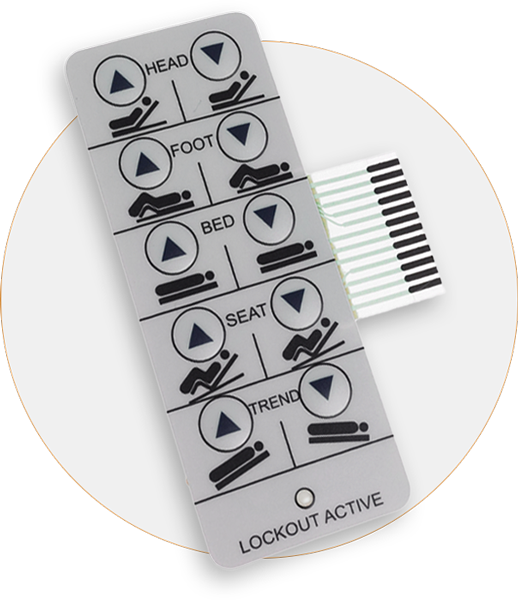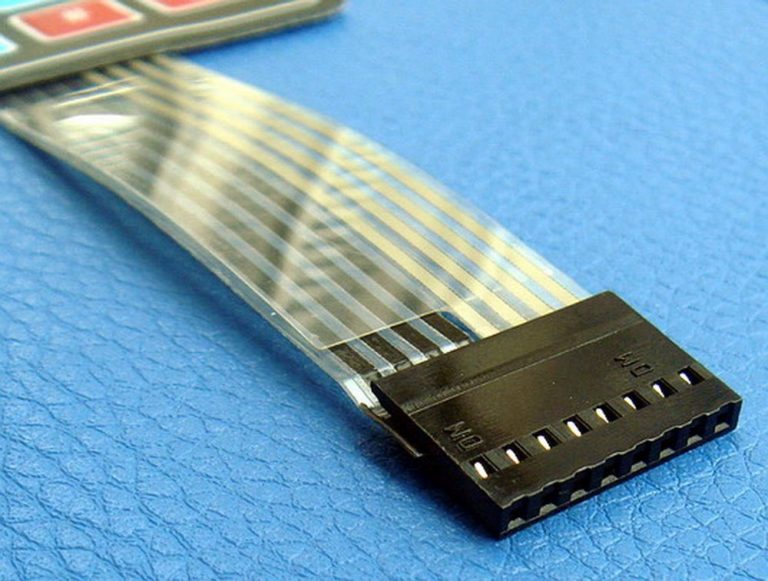A good membrane switch manufacturer provides adaptable design options for advanced applications.
A good membrane switch manufacturer provides adaptable design options for advanced applications.
Blog Article
Everything About Membrane Layer Change: Understanding Its Style and Performance
When you think regarding the control interfaces in contemporary tools, membrane switches frequently come to mind. Let's discover what collections membrane layer switches over apart from other control systems.
What Are Membrane Layer Buttons?

Their smooth nature makes them simple to clean and resistant to dust and wetness, a vital attribute in many atmospheres. Membrane layer buttons can additionally be tailored regarding form, dimension, and graphics, enabling manufacturers to develop distinct interfaces tailored to details products. Plus, they're lightweight and thin, which helps in reducing the total mass of tools. On the whole, membrane switches play a significant duty in enhancing individual experience throughout a broad array of applications.
How Membrane Changes Work
When you push a key on a membrane button, it activates a straightforward yet effective device. The top layer, usually constructed from adaptable product, lowers onto a conductive layer underneath it. This activity bridges the space in between conductive traces, completing an electric circuit. As soon as the circuit closes, it sends out a signal to the tool's controller, which translates your input.
You'll notice that the tactile feedback differs based on the button design, providing either a soft click or an extra pronounced action. As soon as you release the trick, the membrane layer go back to its original placement, reopening the circuit and stopping the signal. This procedure takes place almost instantly, making sure a receptive individual experience.
Membrane layer switches are preferred because of their longevity and resistance to dirt and moisture, making them optimal for various applications, from family appliances to medical gadgets. Comprehending this operation helps you value their prevalent usage.
Trick Parts of Membrane Layer Switches
Understanding the vital parts of membrane layer switches is basic for realizing their performance and design. The protective layer shields against ecological aspects and put on, extending the button's life expectancy. By comprehending these elements, you'll gain understanding into exactly how membrane layer switches over operate and their importance in different applications.
Materials Utilized in Membrane Switch Over Design
The efficiency and sturdiness of membrane layer changes greatly depend upon the products used in their layout. You normally experience polyester and polycarbonate as key substrates because of their exceptional stamina and adaptability. These materials withstand scrapes and chemicals, making them perfect for demanding settings.
The conductive layers typically make use of silver or carbon, chosen for their dependability and conductivity. membrane switch manufacturer. Silver gives exceptional efficiency, while carbon is a cost-effective option. For the overlay, you could take into consideration a matte or glossy surface, relying on your visual needs and individual experience
Make certain to select adhesives that withstand ecological factors like temperature and moisture. Picking the best products will certainly ensure your membrane switch stands the test of time.
Layout Factors To Consider for Membrane Switches
While designing membrane layer buttons, it's vital to take into account numerous factors that influence their functionality and customer experience. Begin by focusing on the hop over to here layout and switch size; make certain they're intuitive and simple to browse.
Verify your design suits ecological factors, like wetness or temperature variants, which can influence performance. By carefully taking into consideration these components, you'll develop a membrane button that boosts usability and complete satisfaction.
Applications of Membrane Layer Buttons
Membrane switches are functional components located in various applications, from commercial tools to consumer electronics. You'll see their influence in makers that call for resilient user interfaces and in tools that gain from sleek styles. Comprehending these applications assists you value the functionality and usefulness of membrane buttons in day-to-day modern technology.
Industrial Devices Use
When you're wanting to enhance the capability of commercial tools, membrane layer buttons Your Domain Name use a trusted option that combines resilience with user-friendly design. These switches are ideal for harsh environments, supplying resistance to dust, moisture, and chemicals. You'll find them in control panels for producing makers, a/c systems, and clinical gadgets, where accuracy and responsiveness are vital. Their reduced profile suggests they fit flawlessly right into various devices, conserving important room while keeping simplicity of usage. With customizable graphics and backlighting choices, you can develop an intuitive user interface for operators, improving performance and safety. Plus, their long life-span lowers upkeep expenses, making them a smart financial investment for your commercial applications. Accept membrane layer buttons to improve your operations and enhance general efficiency.
Customer Electronics Integration
In the domain of customer electronic devices, membrane layer switches play an essential duty in enhancing user communication and gadget functionality. Membrane switches additionally ensure resilience and resistance to dirt and wetness, extending the life-span of your electronics. By picking membrane buttons, you improve not simply the performance but also the design of your gadgets, making daily communications smooth and satisfying.
Benefits and Downsides of Membrane Layer Switches
While membrane switches supply a range of benefits, they likewise come with some downsides that you must think about. One significant advantage is their compact style, making them excellent for space-constrained applications.

Membrane layer buttons can have a shorter life-span contrasted to mechanical switches, specifically under heavy use. They can likewise be less responsive, which may impact individual feedback throughout operation. Balancing these pros and disadvantages will certainly assist you figure out if membrane buttons are the right fit for your job.
Often Asked Questions
How Much Time Do Membrane Layer Changes Commonly Last?
Membrane switches over generally last in between 5 to 10 years, depending on use and environmental conditions. You'll intend to evaluate aspects like wear, exposure to dampness, and temperature level changes to determine their durability efficiently.
Can Membrane Changes Be Personalized for Details Styles?
Yes, you can customize membrane buttons to fit specific designs (membrane switch manufacturer). You'll have the flexibility to select shades, shapes, and formats that match your project's demands, ensuring they mix effortlessly with your overall visual
What Is the Cost Range for Membrane Change Manufacturing?
The cost array browse around these guys for membrane switch production commonly falls between $1 and $10 each, depending on aspects like layout intricacy, amount, and products. You can obtain quotes from manufacturers to discover the finest alternative.

Are Membrane Switches Waterproof or Immune?
Membrane layer buttons can be created to be water resistant or immune, depending on materials utilized and building techniques. If you need them for wet environments, assure you specify those demands during the design procedure.
How Do Membrane Switches Compare to Traditional Buttons?
Membrane buttons are generally thinner and more flexible than standard buttons, using a smooth layout. They're often easier to cleanse and integrate, yet might not give the tactile responses you're made use of to with mechanical options.
Verdict

Report this page